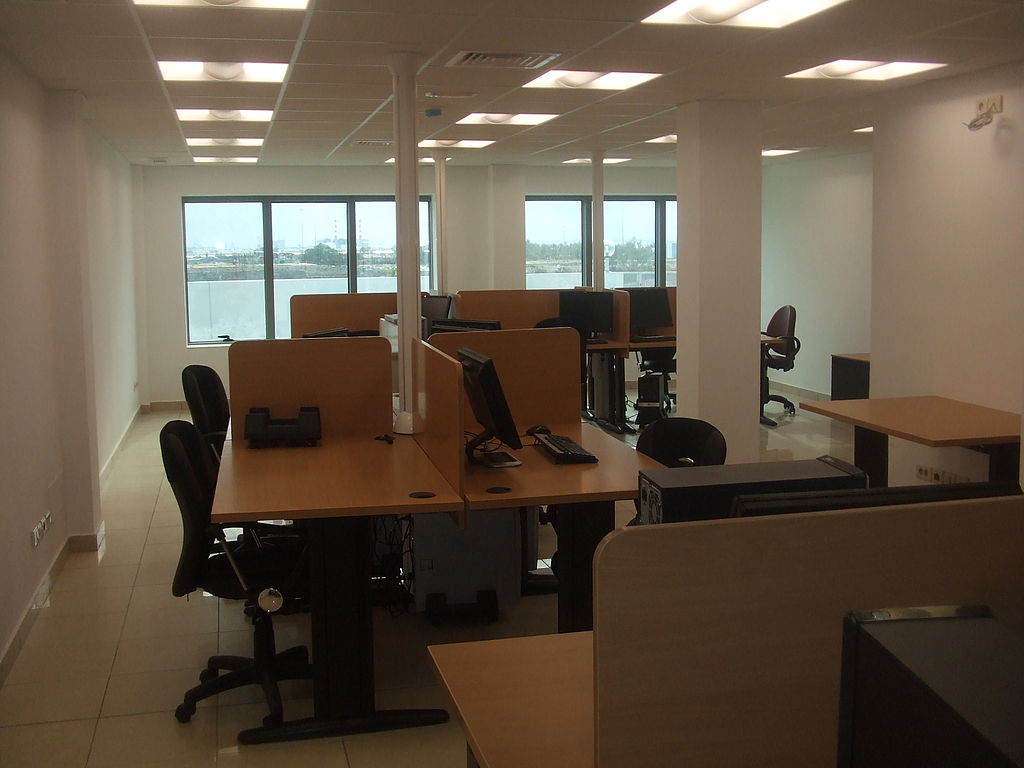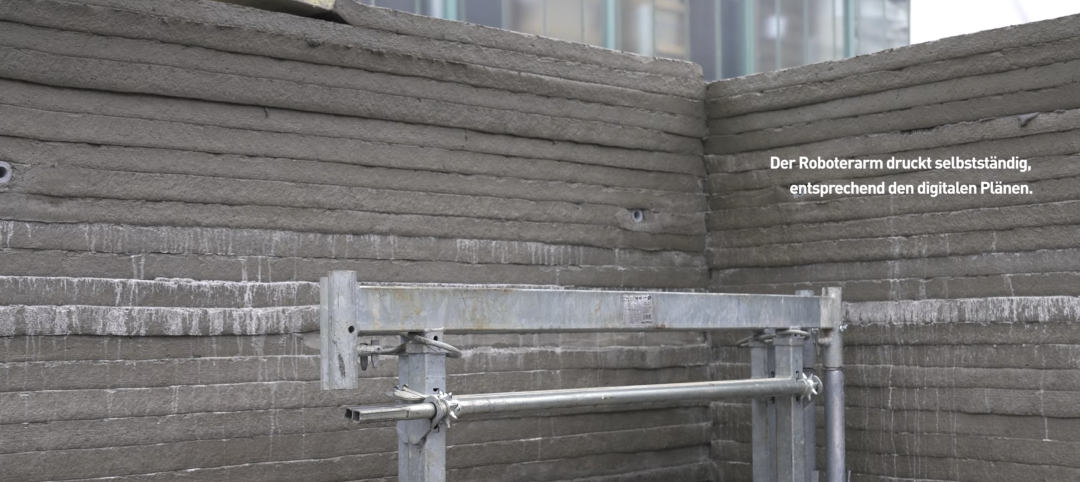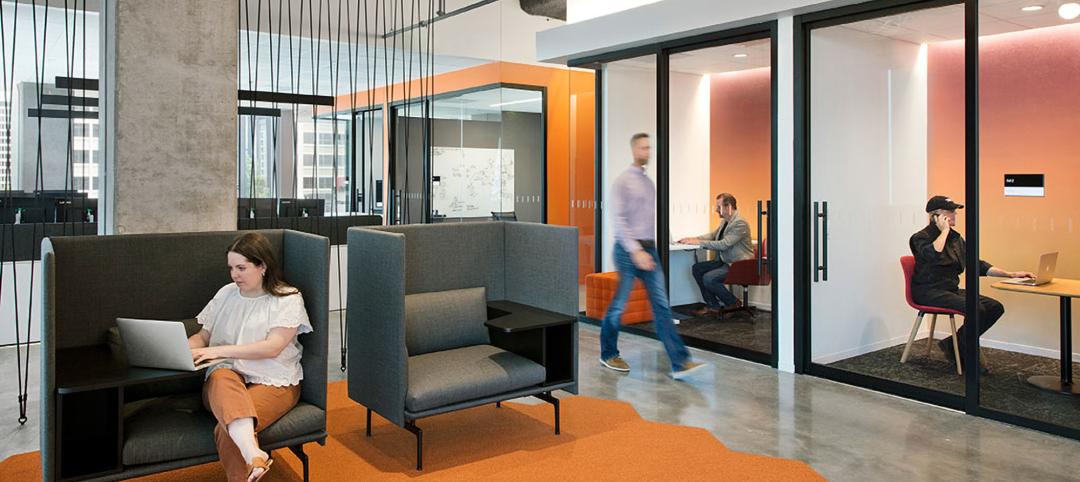Without cookie cutter cubicle rows or coveted corner offices, today’s contemporary workspaces allow employees to collaborate in ways they could have never dreamed of just a decade ago. But, this open work environment also brings its own set of challenges, namely the ability to get online securely and high speed robust wireless networks are now leading the charge.
The open work environment has allowed owners to house more employees in smaller spaces, minimizing the required real estate and capital costs. But, what about all of their wireless devices? If each member of a 500-person staff brings an iPad, a smartphone and a laptop to their office on a daily basis, how can they all get safe and secure online access when needed?
Here are seven ways to enhance workplace mobility:
1. Understand your client’s business. First and foremost, understanding how the company operates on a daily basis, including their corporate culture will determine how the mobility and collaboration spaces are designed from a wireless perspective. For example, a law firm or government agency whose client privacy is a number one priority may require different wire-less availability and security, which may differ from that of a more collaborative market such as a technology company or design firm.
2. Engage IT early. If IT is engaged early in the design process, it will ensure the network platforms are strong, robust and secure enough to support the user’s needs, allowing them to bring in their own wireless devices. Some questions to ask internally include: Does your company have an overall wireless device strategy in place? What is the company policy for employees to bring their own devices into the office? How will the company balance personal and business use of the wireless devices?
3. More wireless infrastructure. An open workspace may require more wireless access points to ensure robust network access and reliability for all. Both functionally and architecturally, the wireless design team will need to understand the architectural elements of the space to ensure strong connectivity for all employees. Is there a ceiling? How is the ceiling constructed? What is above the ceiling? Ductwork and other building infrastructure elements typically found above an office ceiling can interfere with the propagation of signals from wireless access points and hinder the overall effectiveness of the wireless network. Again, engaging the IT team with the consultants and architect early on will ensure proper coordination and that the right quantity of access points are specified in the right locations.
4. Integrate AV when possible. Sending a wireless digital signal to a display in an open work area could make all the difference in successful collaboration. While not every building owner or operator will want to invest in AV infrastructure from day one, specifying the requirements for a base AV wireless infrastructure will allow AV equipment to be added later with little or no infrastructure expense or major disruption.
5. Understand the layout of collaboration spaces. Make sure that the collaboration spaces and wireless access points you’re designing fit well with the intended office floor plan. Which groups within the company will be situated near the collaboration spaces? Will private areas be located nearby? Where will the IT department be located? Will any departments require additional local wireless access points? Where needed, sound masking can be employed to help subdue the noise from a collaboration space for those working in private offices
6. Even wireless is wired. Wireless infrastructure still requires wires. Access Points (APs) that propagate the wireless signals are connected to and powered by the local area network via regular infrastructure cabling. Also, it is still good and common practice to implement a compliment of a wired infrastructure to cater to devices that are not WiFi enabled and to address some user’s reliability and security concerns that still accompany a wireless network. While this will undoubtedly change, as wireless speeds and security have made tremendous strides over the last few years, most owners still want the comfort of a base wired infrastructure.
7. Coordinate telecom rooms and pathways. Whether the office is open, closed, collaborative or non-collaborative, telecom rooms still require proper size and placement. Working together, the IT consultant and architect will need to determine the architectural layout, distance limitations, density of wireless and wired infrastructure in order to meet the requirements of the telecom rooms and their pathways. Ensuring that the pathways for wiring are well coordinated, especially with today’s common open ceiling office look, is critical. How are the wires from the end devices, including to the wireless access points, getting to the telecom room? Keeping the office aesthetically pleasing while still maintaining the integrity of the wires will take some creative engineering and proper coordination with all trades.
Conclusion
As wireless/mobile technologies continues to advance and the open workspace evolves over time, a company that develops formal IT policies, coordinates between the disciplines early on in the design process and considers their corporate layout and future IT requirements will be the company that meets the wireless needs of both its employees and clients down the road.
About the Author
John Passanante, PE, RCDD, is a Senior Vice President with Syska Hennessy Group, New York
Related Stories
Laboratories | May 24, 2024
The Department of Energy breaks ground on the Princeton Plasma Innovation Center
In Princeton, N.J., the U.S. Department of Energy’s Princeton Plasma Physics Laboratory (PPPL) has broken ground on the Princeton Plasma Innovation Center (PPIC), a state-of-the-art office and laboratory building. Designed and constructed by SmithGroup, the $109.7 million facility will provide space for research supporting PPPL’s expanded mission into microelectronics, quantum sensors and devices, and sustainability sciences.
MFPRO+ News | May 24, 2024
Austin, Texas, outlaws windowless bedrooms
Austin, Texas will no longer allow developers to build windowless bedrooms. For at least two decades, the city had permitted developers to build thousands of windowless bedrooms.
Resiliency | May 24, 2024
As temperatures underground rise, so do risks to commercial buildings
Heat created by underground structures is increasing the risk of damage to buildings, recent studies have found. Basements, train tunnels, sewers, and other underground systems are making the ground around them warmer, which causes soil, sand, clay and silt to shift, settle, contract, and expand.
Sports and Recreational Facilities | May 23, 2024
The Cincinnati Open will undergo a campus-wide renovation ahead of the expanded 2025 tournament
One of the longest-running tennis tournaments in the country, the Cincinnati Open will add a 2,000-seat stadium, new courts and player center, and more greenspace to create a park-like atmosphere.
Mass Timber | May 22, 2024
3 mass timber architecture innovations
As mass timber construction evolves from the first decade of projects, we're finding an increasing variety of mass timber solutions. Here are three primary examples.
MFPRO+ News | May 21, 2024
Massachusetts governor launches advocacy group to push for more housing
Massachusetts’ Gov. Maura Healey and Lt. Gov. Kim Driscoll have taken the unusual step of setting up a nonprofit to advocate for pro-housing efforts at the local level. One Commonwealth Inc., will work to provide political and financial support for local housing initiatives, a key pillar of the governor’s agenda.
Building Tech | May 21, 2024
In a world first, load-bearing concrete walls built with a 3D printer
A Germany-based construction engineering company says it has constructed the world’s first load-bearing concrete walls built with a 3D printer. Züblin built a new warehouse from a single 3D print for Strabag Baumaschinentechnik International in Stuttgart, Germany using a Putzmeister 3D printer.
MFPRO+ News | May 21, 2024
Baker Barrios Architects announces new leadership roles for multifamily, healthcare design
Baker Barrios Architects announced two new additions to its leadership: Chris Powers, RA, AIA, NCARB, EDAC, as Associate Principal and Director (Healthcare); and Mark Kluemper, AIA, NCARB, as Associate Principal and Technical Director (Multifamily).
MFPRO+ News | May 20, 2024
Florida condo market roiled by structural safety standards law
A Florida law enacted after the Surfside condo tower collapse is causing turmoil in the condominium market. The law, which requires buildings to meet certain structural safety standards, is forcing condo associations to assess hefty fees to make repairs on older properties. In some cases, the cost per unit runs into six figures.
Office Buildings | May 20, 2024
10 spaces that are no longer optional to create a great workplace
Amenities are no longer optional. The new role of the office is not only a place to get work done, but to provide a mix of work experiences for employees.

















